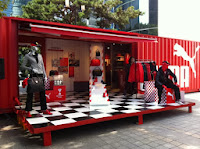The SALE season is upon us!
Every Retailer, especially those in the lifestyle space routinely announce and execute the “End Of Season Sale” (EOSS). Advertisements, posters, etc., scream varying percentages with the word “Upto” mentioned in small print - for example “Upto 70% Off”.
Although the intent of these EOSS offers is to clear stocks and shelf space for the new products, lines and styles, this is becoming counterproductive in many cases. Shoppers have started expecting such offers and their timing has become a well known fact. As such, the customers tend to often wait for EOSS to make their purchases. Ironically Retailers have realized that and are beginning to feed this habit by planning for special EOSS stocks which defeats the very purpose of this activity.
The reality in Indian Retail is that most promotions by and large are run without much thought and no clearly defined specific objective. Most promotions are being planned to increase sales and then every category jumps on to the band wagon to leverage the increased customer walk ins. EOSS is also going down that road and this is definitely not a good trend.
For starters this trend is clearly conditioning the shopper against the regular pricing being offered at any store and skews the sales trends heavily. In the case of mass merchandisers, the skewed sales trends do affect the inventory levels, forecasting, etc. Even after normalizing the sales for promotion impact, the data cannot be completely trusted because there are similar promotions on the same brand being offered by other stores and this also skews the data.
This brings me to the ago old debate of Hi-Lo promotion led pricing Vs EDLP or discounted pricing. Although EDLP offers consistency and its resultant benefits, promotions bring in excitement which has its own set of benefits for any Retailer.
Am I proposing that Retailers do away with promotions and only follow a discounting model?
Not at all. My view is that promotions are not only tactical but also a part of the Retailer’s strategy. As such promotion planning needs to be done in a structured and well planned manner. Let me elaborate on one aspect of structured promotion planning which is setting objectives.
When asked why that particular promotion is being run on that SKU or category, the inevitable answer is either about increasing sales or because competition is doing the same. In other words a well defined and specific objective is missing.
I say so because sales is not an absolute and insulated phenomenon in Retail. It is actually composed of three elements –
- Walk ins or Footfall
- Number of Bills
- Average Bill Value or Ticket Size
Any promotion must be structured to deliver a result which will clearly impact one or more of these three elements. This is important because different categories and varying promotions impact each of these three elements in a different manner. For example impulse or low involvement categories are great to increase footfalls but would require a very strong offer.
Execution is the next important factor to ensure that the promotions deliver the desired results. Whether it is with regard to having adequate stocks or having the proper signage and promotion communication, every execution element plays a vital role and cannot be ignored.
Last but definitely not the least is the store staff briefing which can in some cases make or break a promotion.
Let me share an example. An apparel store was offering a gift voucher linked to particular slabs of bill value. When the cashier was billing my purchase I noticed that I had become eligible for one such gift voucher and wanted to use the value of that voucher against the remaining purchases. Therefore reduce the total amount I was paying.
When I mentioned this to the cashier, as expected, he became flustered and called the supervisor. I was surprised to find that the supervisor was well briefed and he checked my purchases and briefed the cashier to bill the products as I had requested as also capture the gift voucher number against the second bill.
There are two take aways from this incident.
- From a shopper’s perspective the majority of cashiers and supervisors would be flustered in such situations and take the easy way out by saying that it is not allowed. Briefing the staff helps the customer get a clear communication which build loyalty instead of making them frustrated.
- However, from a Retailer’s perspective this seems like a waste of promotional budget. Neither is it bringing me back to increase their footfall nor did it make me buy more and therefore increase the average bill value. Why did that Retailer throw away that margin?
Very clearly promotions are not easy to plan and manage. To be able to achieve the right balance between positive business impact as also happy shoppers, the Retailer should have planned the promotion with a lot of thought, data and a clear objective.
In the absence of adequate thought and planning for any promotion, the Retailer is only buying sales!









